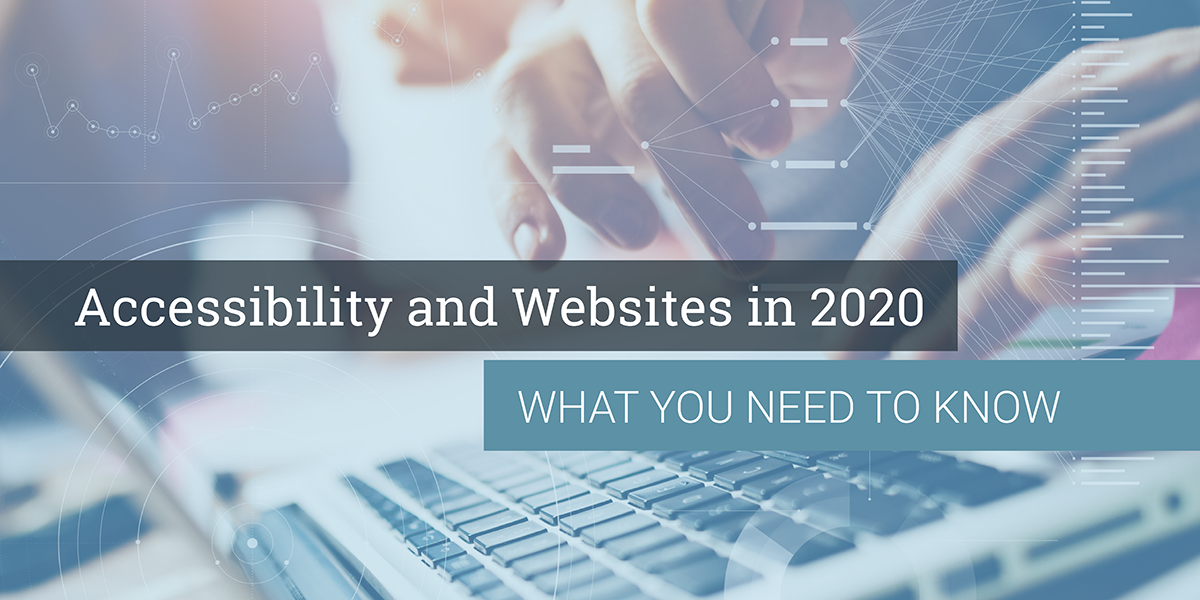
Web accessibility is a thorny topic that’s constantly changing as new technologies evolve. This post will give you a starting point for understanding accessibility and why it should be a priority for your organization.
Have you considered what it’s like for a person with a disability to use your website?
I didn’t until we hosted a panel discussion on web accessibility back in March of 2017. During the discussion, one of our panelists showed us what it’s like experiencing the web using a screenreader. I was surprised to see that the majority of the websites (even the big ones) she navigated weren’t accessible and offered a poor experience.
A few months later in June, Microsoft Software Engineer, Safia Abdalla tweeted, “I’m curious to know: if you have a disability, what’s the hardest thing about browsing the web?” This sparked awareness and encouraged a much-needed discussion on the issue of accessibility.
Current Standards
Fast forward to 2020. Web accessibility is no longer a “nice to have” extra. It’s a basic human right.
According to W3, web accessibility means that websites, tools, and technologies are designed and developed so that people with disabilities can use them. More specifically, people can: perceive, understand, navigate, and interact with the Web.
Web accessibility considers a variety of disabilities including hearing, vision, cognitive, and physical. The CDC reports that one in four adults in the United States has some sort of disability. You wouldn’t deliberately keep 26% of people out of your organization. Why would you exclude them from your website?
Web accessibility enhances web experiences for people without disabilities too. These may include changing abilities that naturally occur with age, people suffering from a broken bone, a slow internet connection, or something as trivial as misplaced eyeglasses.
Furthermore, accessibility best practices support other important initiatives like SEO, usability, mobile-first design, and more.
Curious to see if your organization’s website is accessible? People with disabilities are often frustrated over the same repeat offenders including:
- Not being able to read or resize fonts.
- Having to listen to a screenreader recite the website’s navigation every time a page loads.
- Not being able to access key features of a website with a keyboard.
- Missing links and vital content because they blend in with other text.
- Not being able to consume multimedia content because there are no captions or transcripts.
- Not being able to interact with a website because you used CAPTCHAs that exclude people with visual impairments or cognitive disabilities.
Designing an accessible website is a process that requires a solid plan. Fortunately, the Web Content Accessibility Guidelines (WCAG) provides specifications that can be followed to create an accessible website offering a good experience for all.
There are four primary accessibility principles.
Text alternatives for non-text content
Basically, this boils down to giving users alternatives for how they consume your content.
This varies from offering short equivalents for buttons, icons, to offering short descriptions for graphics and using labels for your form controls.
Alternatives for multimedia
If your organization uses videos to describe your services, you should also include video captions and video transcriptions. Bonus! This helps with your SEO too.
Content can be adjusted to meet the user’s needs
To meet accessibility standards, users should be able to change how content is presented. So, headings, lists, tables, and other content should be marked-up properly.
Instructions and other vital information should be easy to find and use. Use plain language and avoid jargon and idioms.
Browsers and assistive technologies should provide settings to customize how the website is presented.
Content is easy to see and hear
In a nutshell, this has to do with making distinguishable content easier to see and hear. Some examples of this principle are related to color selection, contrasts, background audio, font sizes, and more.
Before you jump in to fixing your website, we have some tips.
We asked accessibility expert, Sonja Forbes about the common mistakes that organizations make when it comes to web accessibility.
Common Pitfalls
The most common mistakes that organizations make are:
- Completing the product/content and then implementing accessibility. The majority of the time, web accessibility is an afterthought. Similar to SEO, it’s always easier and better to develop and execute a web accessibility plan at the onset of a project, not after it’s completed.
- Trying to remediate content internally without the correct resources. Web accessibility is complicated and the requirements continually evolve. Untrained staff handling accessibility issues can leave your organization open to potential litigations, lose government contracts, or becoming unprofitable. Hiring a digital accessibility expert ensures that accessibility is handled properly and efficiently.
- Only adding accessibility plug-ins or widgets. While there are some really great web accessibility plug-ins and widgets available, they will only handle pieces of your plan.
- Forgetting about other digital assets, such as documents. If your site has been out there for a while, it’s easy to miss assets. Crawl your site for a complete picture. That way, assets won’t be overlooked in your process.
Want to learn more about web accessibility? You’re in luck. We’ve assembled some helpful resources to get you started.
The A11 Project
Google Web Accessibility Fundamentals
Making the Web Accessible - W3C WAI
WebAim’s WCAG 2.0 checklist
Rev Transcription App
UserWay AI-Powered Accessibility Widget
Web accessibility is a vital component to offering an inclusive experience. If you need help determining how to approach accessibility and your website, book a meeting to chat about ArcStone’s website accessibility audit services.